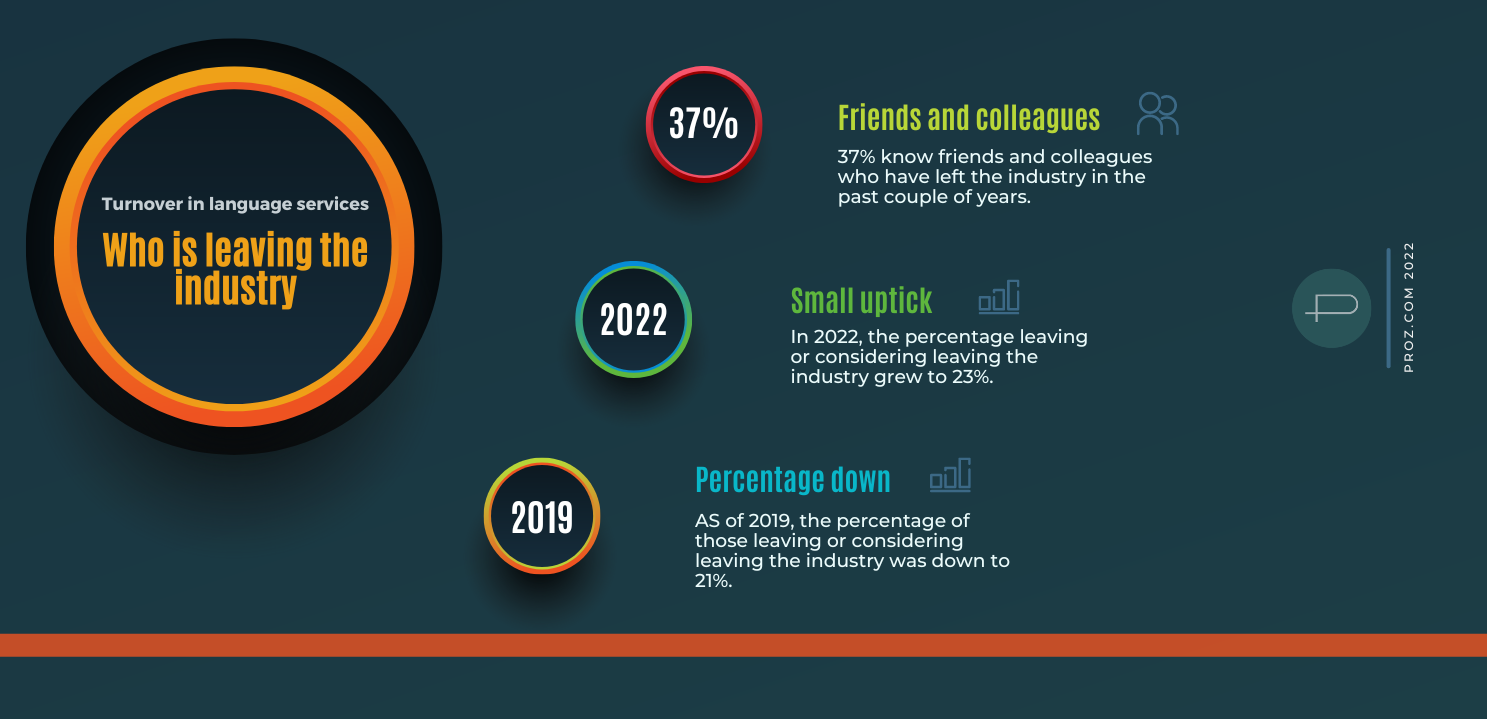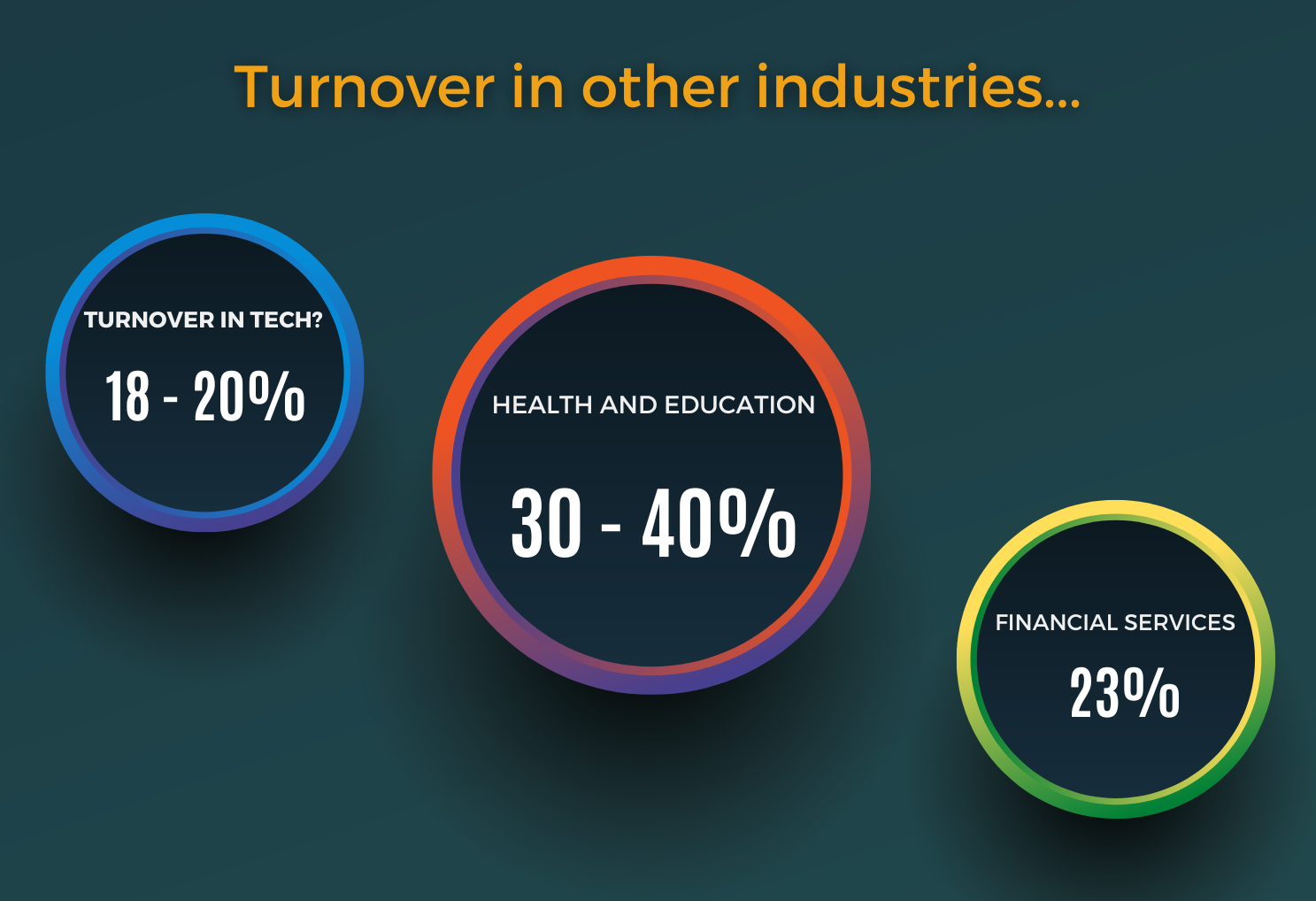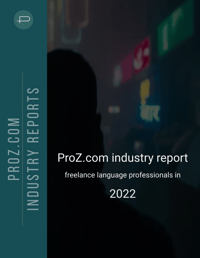You win some, you lose some
The percentage of people who are leaving the industry had declined somewhat by 2019. Just under 21% said they were planning on leaving, or had already left the industry. There was a small uptick in this percentage in 2022, to 23%.
Now, bear in mind that these percentages include people who are considering leaving but who have not yet left, and they also likely leave out some who have already left as well. In 2022, roughly 37% of freelance translators and interpreters reported knowing friends or colleagues who had left the industry in the past couple of years.
Arriving at an actual, real turnover rate for an industry as fragmented as language services would probably be close to impossible at the moment. But we can look at these percentages as indicators to keep an eye on, and it may be helpful to look at what is happening in other industries just to get a sense of perspective. As points of comparison, depending on where you look, turnover in the tech industry or in Finance is around 18-20%, Education and Health services might be 30-40%.
It is difficult to say yet if the percentages we are talking about here are “normal” for the language services industry or not. A slight increase in people leaving in 2022, in the context of the post-pandemic (or wherever we are in the pandemic now) and the trend to re-think one’s work and life in a new light, would not be surprising. The percentage of people leaving is also compensated for, and most likely surpassed, by the percentage of newcomers who have selected or are considering freelance work in the language services industry as a career path.


Pay attention to Attention Economy. Wait, what’s that?
Under the theory of Attention Economics, a person’s attention is treated as a limited resource. This is a trend we can all see impacting our daily lives. When someone sends us a video to watch, how likely are we to watch all the way through if the video is more than 20 minutes long? Or if it is more than 5 minutes long? Which are we more likely to read, a 14-page article, or a two-page article? Can we get by with just reading the summary?
In years past, if you wanted to sell a product or service or an idea to someone else, you had to have an “elevator pitch”: a brief, catchy way to communicate that product, service, or idea that could be delivered during the course of an elevator ride. You could expound on the thing later in various formats, but you had to catch your audience’s interest, make them want to learn more, first.
In 2022, the elevator is modern. The ride is fast. There is no stopping at different floors from point A to point B. And the audience you are pitching to may not even have the bandwidth to listen to a speech, preferring instead a single image or two which sum up what is unique about what you have to offer. The volume of things clamoring for our attention leads us to economize how we spend our attention. Attention Economy has greatly accelerated in all facets of how we live and work, and this applies to language professionals seeking the interest of new clients.
This can be a hard pill to swallow for some. As language professionals, many are exceptional at describing in detail and with precision what they do and what they have to offer. You can still do that, for those who wish to “read more”, as it were, but it is a good idea to lead with something else which is absolutely compelling, absolutely brief, highlighting your differentiators, and is easy to consume. Make that the very first thing they see. A project manager juggling various projects and deadlines will not spend too much time looking here and there to get a full picture of who you are as a candidate, nor should they have to nowadays. A best practice for getting new clients moving forward is to show them how you value the resource that is their attention by giving them a presentation of yourself as a professional that is easy to find, easy to understand, and is also beautiful.

This is an excerpt of the most recent ProZ.com industry report. To read the full report, you can go to https://www.proz.com/industry-report/
ProZ.com industry reports are periodic publications that take a look at trends, challenges, and opportunities in the language services industry, from the perspective of the freelance language professional. ProZ.com paying members enjoy immediate, full access to these reports.
Get the attention of new clients. It's easy to do if you are a ProZ.com member, which gives you visibility, and have a strong, professional-looking profile. That profile is your online elevator pitch, so have a look at yours today and ask yourself, "Would my ideal client be attracted by the information I have on display here? Is it beautiful?"
If you are not yet a ProZ.com member, you can start now, with special discounts on membership and training. Find out more »


.png)



